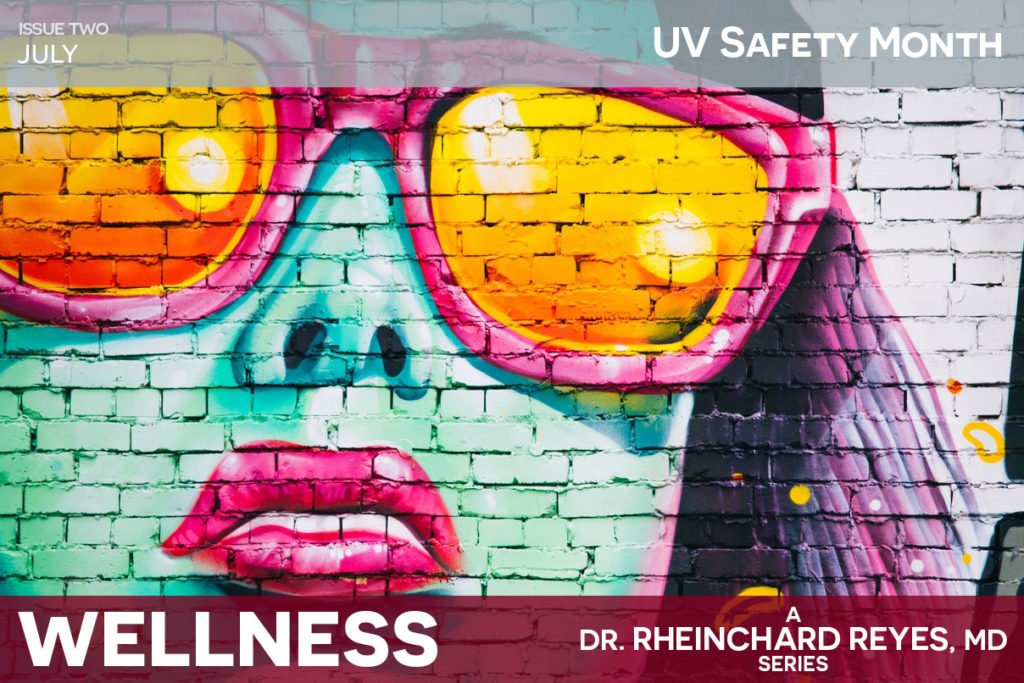When it comes to eye protection, whether it is against harmful UV radiation, or averting the risks of diabetic retinopathy or glaucoma, you should be well aware of the recommendations of eye care professionals. They have been insisting on a number of tips for the last decade for optimal eye protection and health.
Differentiating Ultraviolet Radiation
Radiation from the sun can come in the form of UV-A and UV-B. This is a simple differentiation of the types of rays that reach your eyes—or your skin, for that matter. UV-A are the longer wavelength ultraviolet rays. They are the ones that impact us to a much larger extent, penetrating further. For example, they are responsible for tanning, sunburn if you are not careful, or premature aging, such as wrinkling. However, in the last few decades, extensive efforts have been made to make everyone at large aware of the harmful effects of UV-B radiation, a shorter-range wavelength which can cause sunburn and discoloration, among other things. Unlike A, this type B radiation cannot penetrate glass, so it is a major concern especially in sunny climates, where people are outside and exposed for a longer period of the day… but it is also more prevalent and damaging at higher altitudes, so climbers and skiers —think snowblindness— need to take special care.
So how does it affect the eye?
Well, simply put, the rays of the sun penetrate the eye’s cornea. They reach the lens and the retina, which is where the damage is done. Common eye conditions of overexposure to sunlight include cataracts, macular degeneration, and photokeratitis, among many others.
The UV Index Chart
The Environmental Protection Agency and the National Weather Service have come up with a UV Index, a color-and-number coded system that alerts us of the dangers. If you have ever checked any colored weather map on a newspaper or online, you will be familiar with this.
|
UV Index
|
Color
|
Risk
|
Recommendations
|
|
0.0 – 2.9
|
Green
|
Low
|
No danger to average person. Wear sunglasses on brighter days.
|
|
3-0 – 5.9
|
Yellow
|
Moderate
|
Little risk if you stay in the shade in the middle hours of the day and you use a hat and protective sunwear (UB-blocking)
|
|
6.0 – 7.9
|
Orange
|
High
|
High risk. Stay out the sun insomuch as possible between 10:00 am and 4:00 pm. Wear hat and UV-protected sunglasses.
|
|
8.0 – 10.9
|
Red
|
Very High
|
Very high risk. Same as above. Take extra precautions and remember that reflective surfaces, such as sand, water, and snow, will increase UV impact, so they can be very damaging.
|
|
11.0+
|
Violet
|
Extreme
|
Extreme risk. Unprotected eyes or skin can burn in minutes. Same recommendations as above.
|
So, summarizing, word of caution in these conditions:
- Where you live or are visiting may increase the risk. The closer you are to the equator, the higher the radiation. For example, be much more aware of the risks and take extra caution in Florida as opposed to Maine.
- Altitude is a factor. The higher you are, the bigger the risks.
- You have to extreme this caution between 10:00 am and 4:00 pm.
- Landscape is also a factor. Open fields, the beach, high up a mountain are riskier than, say, an urban setting, due to all the cover from buildings and trees.
- Radiation reflected from another surface, mainly sand, water and snow, can be twice as harmful as direct sunlight.
- If taking medication, consult with your physician regarding any possible increased sensitivity or exposure to sun.
Choose Proper Protective Eyewear
Sunglasses are recommended even in the lowest UV index. When shopping for sunglasses, always look for the label that indicates 100% UV protection or block. Make sure this label is posted by a trusted source, meaning beware of imitations, rip-offs or shady retailers. Larger framed and close fitting sunglasses are a better option as they provide extra coverage in sensitive areas, like the corners of your eyes. If you are unsure, checking with your optometrist, or even your physician, is a wise idea. Proper UV protection almost never impacts the overall price of the sunglasses. Expensive brands may or may not have adequate protection and the premium you are paying is normally more about frame design or materials, as well as the brand’s perceived value. Also, polarized sunglasses eliminate glare. This is a choice based on the added comfort or quality of this feature, but never a reflection on their capacity to block UV radiation.
Sources:
- https://medlineplus.gov/eyecare.html
- https://holistichealthhq.com/eye-care/
- https://www.paulaschoice.com/expert-advice/skincare-advice/sun-care/the-difference-between-uva-and-uvb-rays.html


